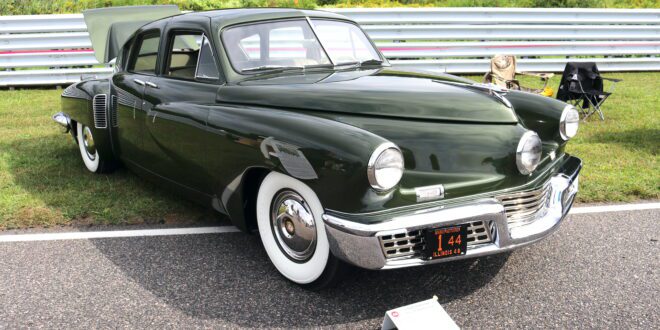LAKEVILLE, CT – So few of them were built that each one is routinely referred to by its chassis number. Howard Kroplick of East Hills, N.Y. on Long Island owns “#1044.”
Kroplick paid nearly $1.35 million at a Sotheby’s auction in Arizona in 2017 for the privilege of owning a 1948 Tucker 48, one of the most memorable, short-lived and stylish models in automotive history.
“There were 51 Tuckers made, including the prototype, and obviously this is the 44th one off the line,” said Kroplick while showing off his restored, rear-engine beauty at Historic Festival 42 at Lime Rock Park racetrack in Lakeville over Labor Day weekend.
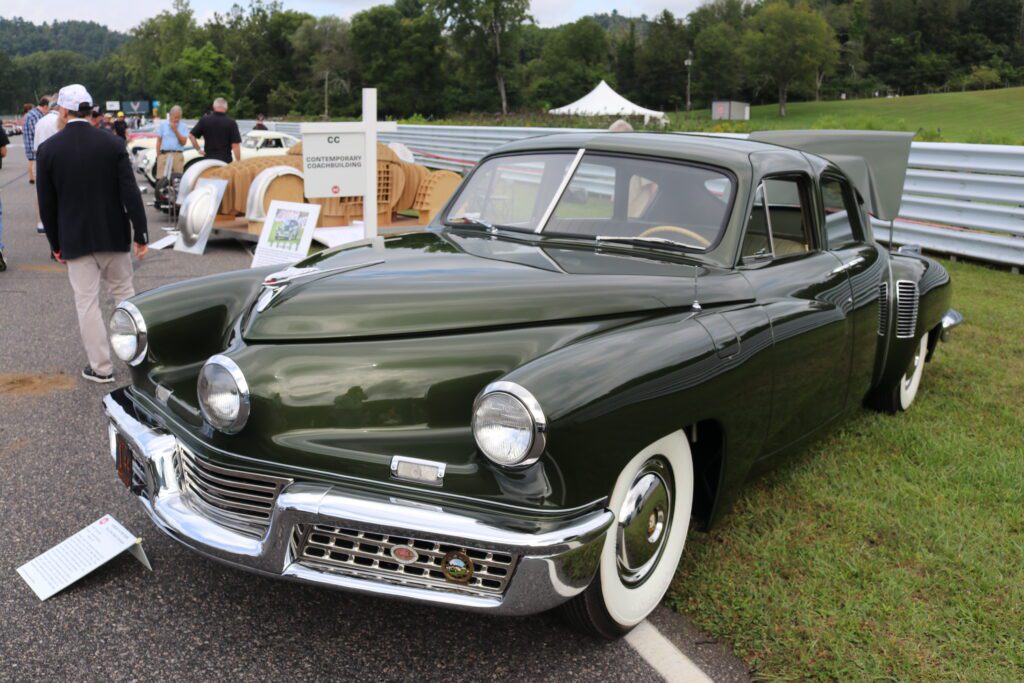
Parked on the track’s Sam Posey Straight, Kroplick’s stunning Tucker drew a constant crowd of curious spectators because of its of futuristic design, with a third directional headlight known as the “Cyclops Eye,” and the lore that endures 75 years after the company went bankrupt.
How many how other cars have had a motion picture recount their development as the 1988 movie “Tucker: The Man and His Dream” starring Jeff Bridges did?
See the Tucker in this YouTube video from RIDE-CT…
—
Tucker had its assembly line in Chicago and began producing cars in 1947. It was promoted as the “Car of Tomorrow.” Kroplick provided a short history:
“In about 1947 Preston Tucker was going to build a revolutionary car that was more aerodynamic and safer than any other car in the world,” he said.
“It had special features. It had a helicopter engine initially in the back.The engine was in the rear. The trunk was in the front and he promoted it as the first new car in 50 years, a contemporary car. It was really dynamic and it created quite a sensation.”

At that point in time after World War II, the other carmakers’ models still had pre-war designs. Tucker was a startup without a history and had a fresh take on motoring. “It was a major publicity car. Whenever a Tucker came off the line, there was a sensation, and thousands of people would crowd around the Tucker,” Kroplick said.
In addition to the center headlight, the interior was different, too, with the instrument cluster and switches shoe-boxed behind the steering wheel, making for an unusually spacious area on the passenger side.
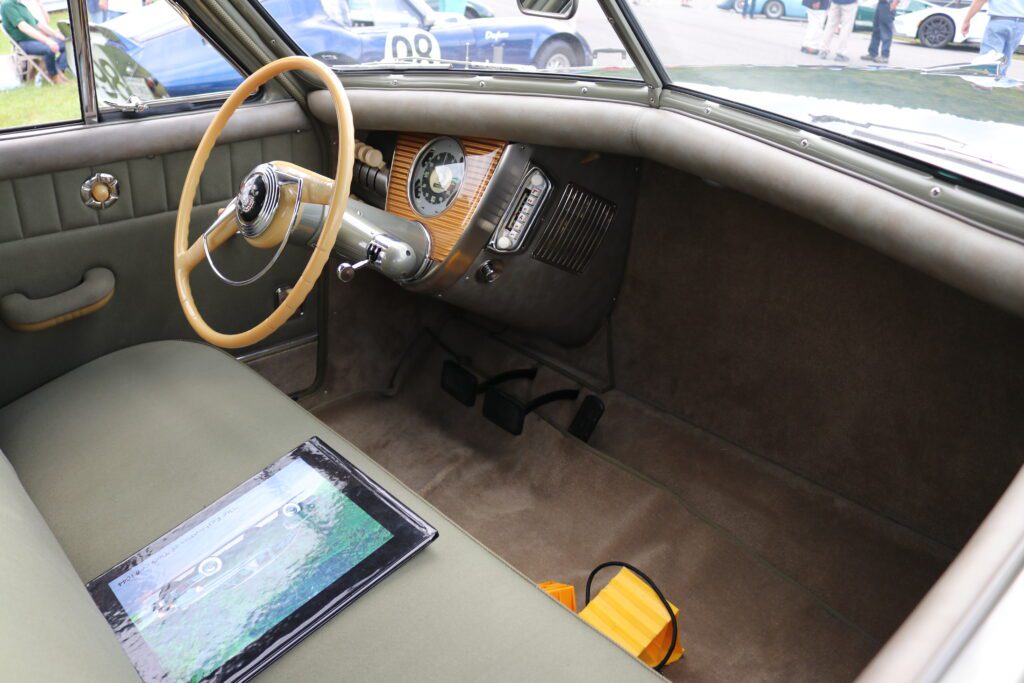
“The dashboard’s really interesting because everything’s to the left, and to the right was called the crash zone. This is an area that if you were in an accident you could dive into it for safety,” said Kroplick.
“Now there’s no record of anybody actually ever doing that but then again nobody has ever died in a Tucker so maybe it worked.”
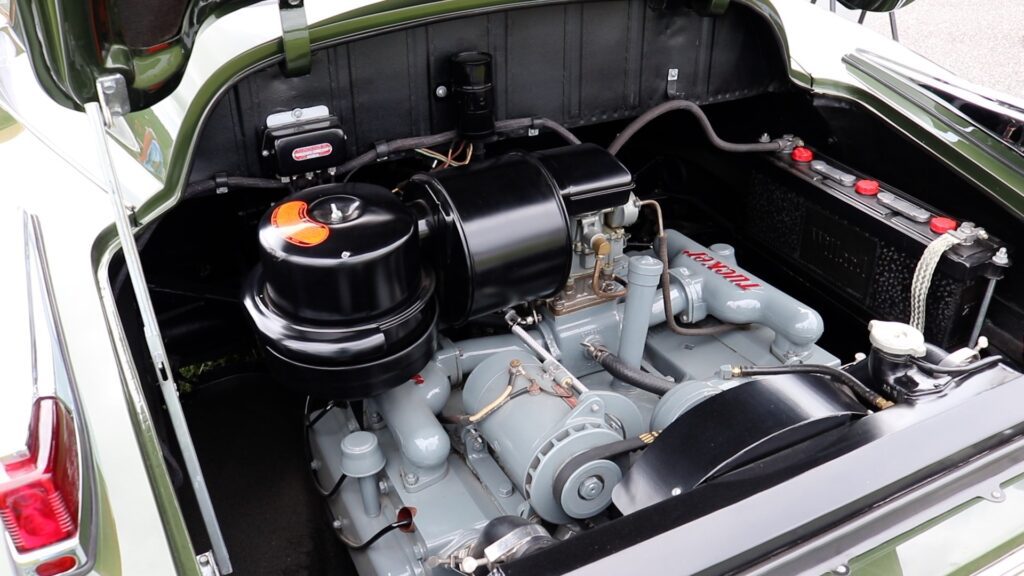
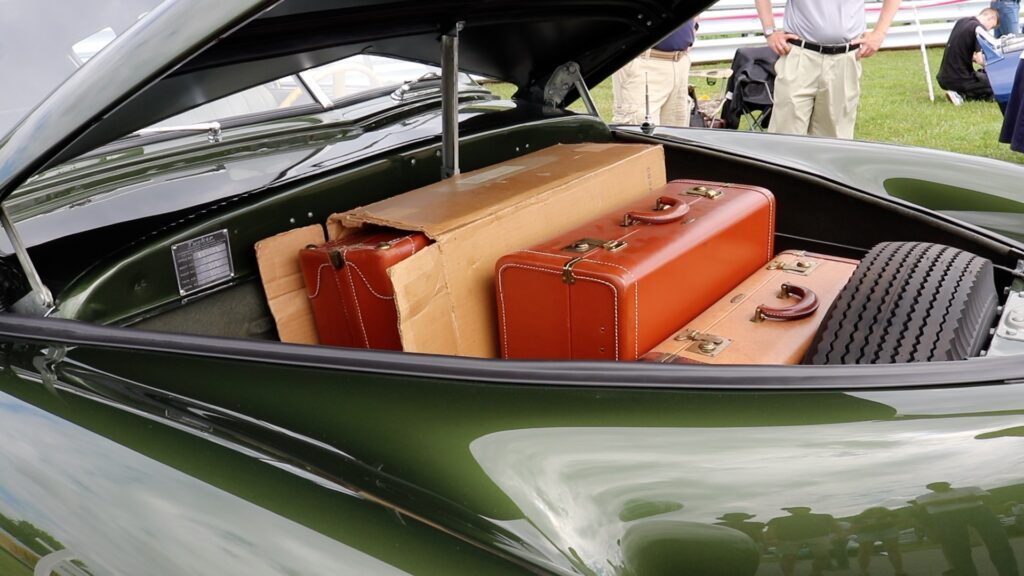
—
With its rear engine and front trunk, the Tucker was certainly different. Kroplick’s model had an astoundingly low 7,900 miles on the odometer when he bought it. A auction photo of the Tucker showed its exterior to be root beer brown. “It was the only brown Tucker in the world at that time. It got painted in 1972,” said Kroplick of the model that was originally Andante Green.
Kroplick revived the green during restoration. “The car itself was restored by the great-grandsons of Preston Tucker, Mike and Sean Tucker, along with Rob Ida, so this car was extremely well documented when we restored the car. Because of that, we consider it the most accurate Tucker in the world and it’s definitely the most awarded Tucker in the world,” said Kroplick, who was joined at the show by Mike and Sean Tucker.
Hearing Kroplick talk enthusiastically about the Tucker leaves the impression that he’s as much in awe of the model as the casual onlooker.

“I collect historic cars so this is one of several historic cars that I own. This one we’re very proud of. It’s won five best in shows, which is pretty rare for a Tucker,” he said.
“Tuckers are rarely shown at car show or concours, Most of them are owned by museums and they sit stagnant. I think there’s only about 10 of the Tuckers actually run, including this one.”
At least 18 Tuckers belong to museums – #1001, #1022 and #1026 can be found at the AACA Museum in Hershey, Penn. while #1039 belongs to the Smithsonian Institution in Washington, D.C.
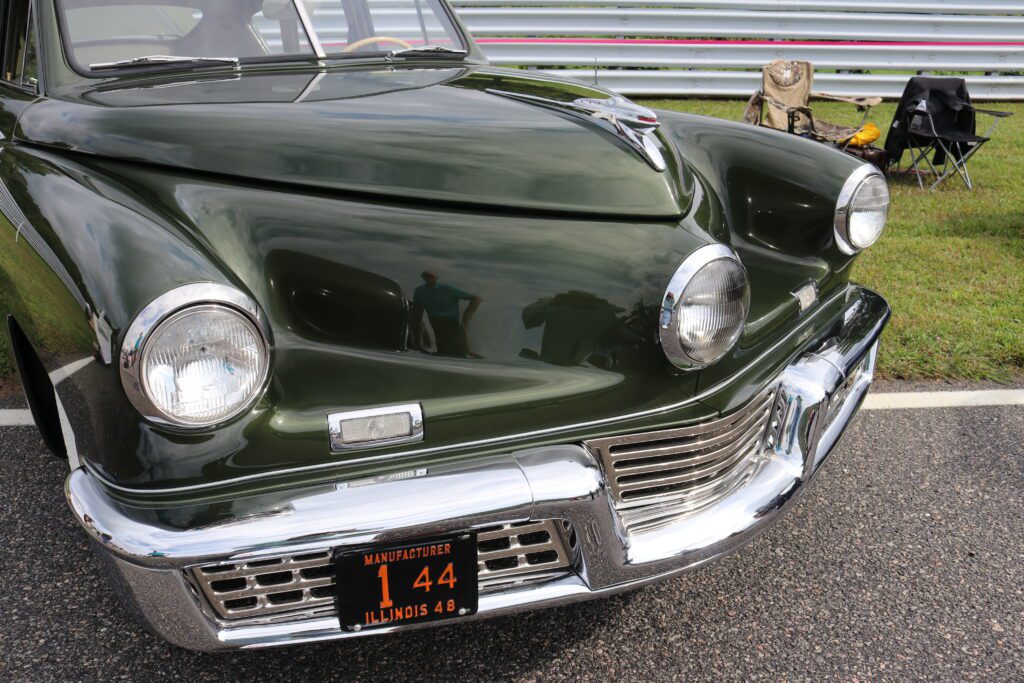
Kroplick drives his Tucker, and it was steered down the Lime Rock track to collect a class trophy at Historic Festival 42 for “Contemporary Coachbuilding.” “It’s a bit of a challenge to drive. It has a Cord transmission; a 1937 Cord transmission in it, so it’s a pre-select. When you’re driving this, you really have to think about how to get in gear and which gear you want to be in,” he said.
Tucker stopped producing cars on March 3, 1949, shut down by the U.S. Securities and Exchange Commission on accusations of stock fraud, although Preston Tucker was never convicted of any wrongdoing. One popular and longstanding theory is that Tucker’s effort was sabotaged by the Big Three automakers.
Whatever caused the company’s closure resulted in the surviving models becoming sought after and exceedingly pricey. The $1,347,500 that Kroplick paid for his Tucker is certainly a lot of money, but it’s nowhere near the record amount paid for one. Tucker #1021 sold earlier this year for $1.7 million, while #1043 sold at auction in 2012 for more than $2.9 million.

(Photos by Bud Wilkinson)
(A version of this story originally appeared in the “Republican-American” newspaper in Waterbury, CT on Sept. 7, 2024.)
 RIDE-CT – Classic Cars Celebrating Classic Cars in Connecticut
RIDE-CT – Classic Cars Celebrating Classic Cars in Connecticut

